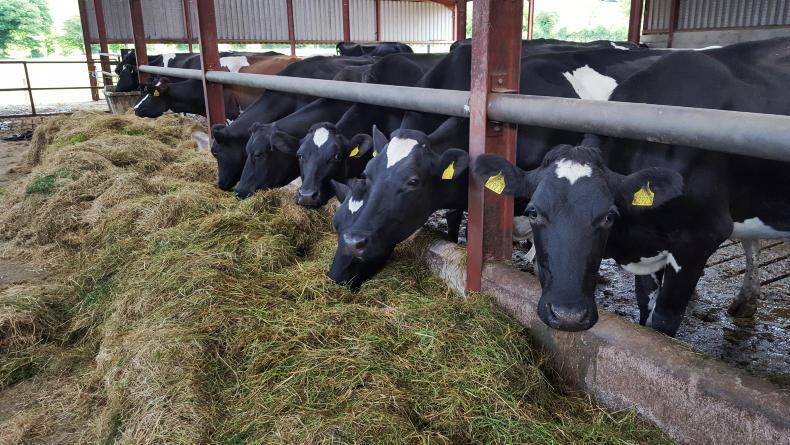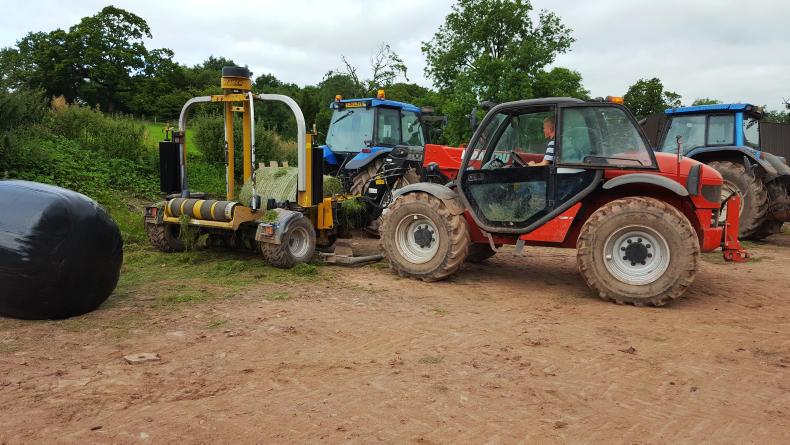Estimates of silage requirements for the winter should be calculated and compared to current silage stocks on farms.
Good growth this year means that several programme farmers have adequate silage made already and still have room to make more fodder while building grass covers for the autumn.
Expanding cow numbers on some farms has widened the supply-demand gap and has put pressure on meeting feed requirements this winter.
A silage budget for the winter ahead is an estimate and several assumptions are made, particularly with the length of the winter period. Additional demand should be included to allow for poor weather in the shoulders of the year.
Robin Clements’ calculations in Table 1 are based on an average 25% dry matter silage. However, he expects silage quality to be better this year and above 25% dry matter, so less tonnage will be required. The most accurate picture of what is in the pit or bales will come from a silage analysis.
Bridge the gap
If supply is still short of demand, plans can be made to bridge the gap. This could include buying in silage, feeding extra concentrates, culling cows, pausing planned expansion or making plans to get grass into cows early in the spring if conditions permit.

There are a range of options to address a potential shortage in winter feed, and for many farmers this won’t be an issue this winter.
However, knowing if it is or not requires an estimate of demand to be compared to an inventory of supply.
Robin Clements Trillick, Co Tyrone
Dry conditions at the end of last week allowed us to get 90 acres of silage made. This included 50 acres of third-cut and around 40 acres of ground that was reseeded in May. This area of reseed had been grazed with young stock in June and was closed up and fertilised in July.
The crop from the reseed was fairly light but it was what we expected for just under five weeks’ growth from new grass. Overall, there were 70 acres reseeded in May and I plan to get two bags of nitrogen and some slurry on to all this ground and cut it again before it is closed for winter.
Although conditions have generally been good to make silage, we are aware we still have bales to make to meet our feed requirement for the winter.
The silage budget for the farm is based on a six-month housed period. This includes a generous buffer period for the milking herd in case of an early winter or late spring. The feed allowance is reduced to four months for young heifers and five months for in-calf heifers.
Average dry matter is assumed at 25% for the budget. All silage is made in bales with average fresh weight of 0.75t per bale. Based on the budget, we need around 2,500 bales (1,880/0.75) and we currently have 1,800 bales on the farm.
However, we still have bales coming from the 70 acres of reseed and there will be more surplus grass from the grazing platform due to reduced demand as cows are dried off.

Dried off
We have 50% of the herd dry at present and another 25% are to be dry before the end of August. Dry cows are being housed this year for three weeks before calving.
This means we can get minerals into cows and feed long, high-fibre silage/hay prior to calving. It also reduces demand on grass and allows more good-quality bales to be made.

Dry cows are currently being fed lower quality silage in the house.
Calving will start in September so getting calving pens and calf rearing pens ready is a priority this week. We will have around 60 cows calved by the end of September so we also need to allow some cover to build to meet this demand as they go back to grass.
The current gap in supply and demand of silage is mostly down to expanding numbers on the farm, coupled with the ground taken out of production for reseeding. We will have 20 extra milking cows this year as well as 16 extra one- to two-year-old heifers.
We have 45 in-calf heifers coming forward (including 20 purchased heifers) as well as seven purchased two-year-old cows.
We can be particular when selecting cows to cull as we have room for at least 30 to go. This allows us to get rid of any problem cows and reduce demand on silage, plus a good price for cull cows helps the cost of replacement heifers.






 This is a subscriber-only article
This is a subscriber-only article











SHARING OPTIONS: